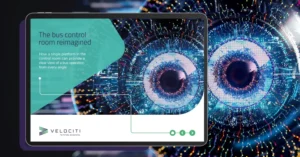 “The constant overlapping of systems and applications gets in the way of delivering good bus services.”
“The constant overlapping of systems and applications gets in the way of delivering good bus services.”
Kurt Cappello, Operations Manager at trentbarton
Controllers have more sophisticated technology than ever before. There are systems to tell them what’s happening on the road, where the buses are, and which drivers are available for allocation.
There are also systems controllers can use to send instant messages and record incidents to generate lost mileage reports.
The issue lies in the segregation of these individual systems that operate independently without integration. Control teams frequently find themselves juggling three or four screens simultaneously to retrieve or input data, leading to a significant amount of time wasted on scrolling and clicking between different interfaces.
“One of the biggest issues is managing multiple different systems at once. Even within the same system you have different applications for different things – lost mileage in one app, staff and shifts in another.” – Kurt Cappello.
There is no shortage of separate solutions in the control room, and this presents some significant barriers to delivering good bus services.
Our ebook explores the concept of a single control room platform which brings systems together onto one screen, providing the insight to run a reliable, efficient and profitable bus operation.
Having a unified control room platform enables controllers to identify issues promptly and take preventive measures before they lead to delays. This ensures buses stay on schedule and passengers reach their destinations punctually.
Better visibility of vehicle and driver information would enable improved on-the-spot decisions, so routes can be re-allocated quickly with a clear understanding of the cost and the impact of those real-time decisions. By consolidating data from various systems, operators can gain the insights necessary to leverage past experiences and shape a sustainable, successful bus service for the future.



